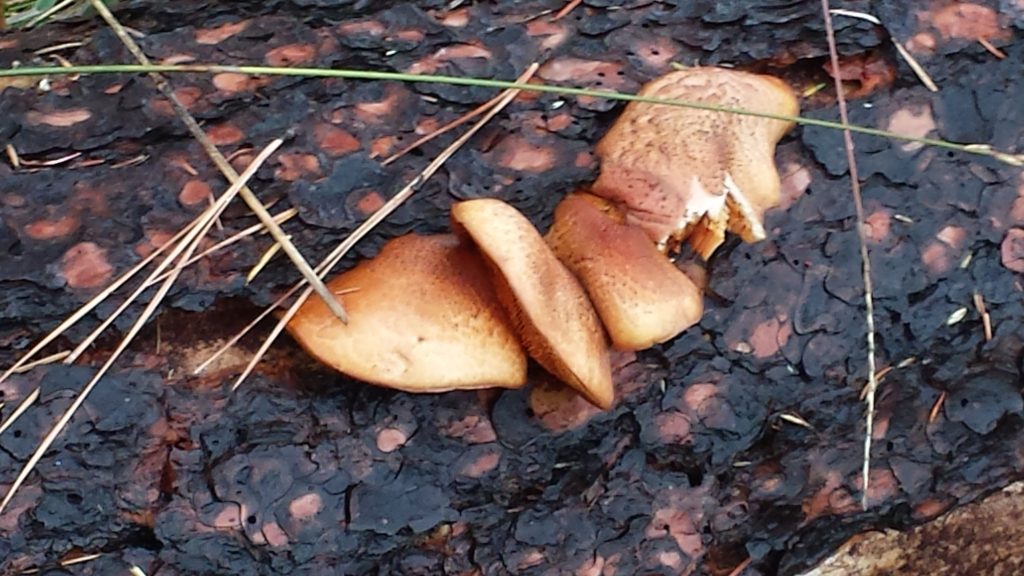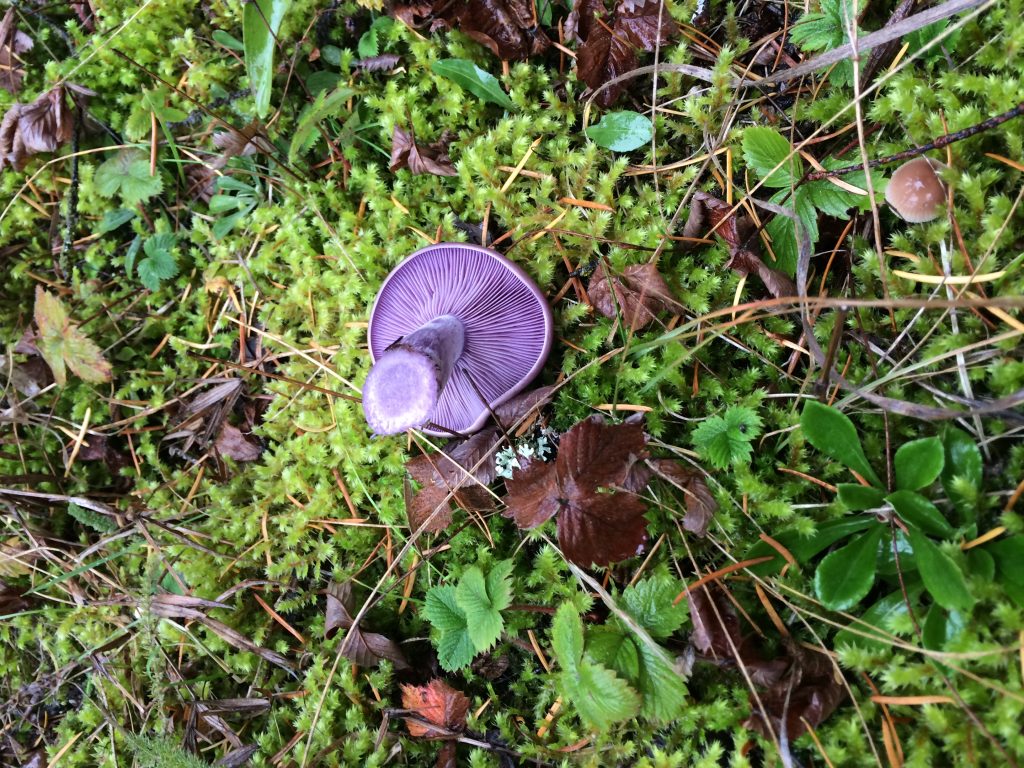- Teeth fungi are gourmet foods in France
- I have no idea if this mushroom is edible. Don’t eat any you’re not 100% sure of.
- Birch polypore can be used as a bandaid
- Shaggy parasol
- The coveted blewit mushroom
Wild mushrooms that grow in British Columbia have wonderful names; Hideous Gomphidius, Blewit, Fat Jack, Shaggy Parasol, Lion’s Mane, Tippler’s Bane, birch polypore. They were some of the surprise findings on a recent wild mushroom tour I took with Charles Reuchel of Elements Adventures , based in Vernon, BC.
Mushrooms are fascinating on many levels. The way they grow. The way they taste. The dangers that they pose. The cures they may harbor for various diseases. They also offer a viable source of income for people willing to spend a lot of time in the bush. The harvesting and sale of wild mushrooms is a growing industry in BC, particularly the pine or matsutake mushroom. These mushrooms are associated with old-growth forests and can be found throughout BC, but specifically in the Skeena River -Bulkley Valley areas.
According to David Arora, author of All that the rain promises and more, mushrooms are the reproductive structures or ‘fruit’ of certain fungi that live hidden lives under the soil or forest duff and on living and dead trees. Their underground root system is called a mycelium, and it can extend for a long distance. When conditions are right, the organisms that we recognize as mushrooms pop out of the ground like magic.
Environmental mycologist / mushroom expert Paul Stamets says that mushrooms are almost human, or at least almost animals. They do not manufacture their own food like plants do. They must obtain food from outside sources the same as animals. Stamets’ TED talk “Six ways that mushrooms can save the world” is one of the most popular TED talks ever given, ranking in the top ten.
Mushroom identification can be very difficult; witness the recent tragic death of a young child in BC from eating a deadly amanita mushroom.
Without getting into too much detail about collecting, I think going on a mushroom tour, buying a reference guide, and finding someone to mentor you are the best things to do. Charles Reuchel suggests the following precaution: after finding a mushroom that you can 100% identify, take a small piece and cook it. Wait for a week and make sure you’re not allergic to it or have identified it wrong. Observe where you picked the mushroom and go back the next year to see if it’s still there. In other words, don’t hurry home to cook and eat the mushrooms. Take your time and be careful.
The best way that I have found to eat wild mushrooms is to buy them from Dan the Mushroom Man at the Vernon Farmers’ Market. They’re available fresh in season or dried. I like morels the best and they make a delicious wild mushroom soup.





